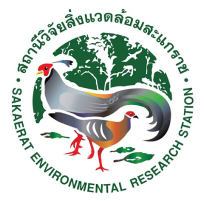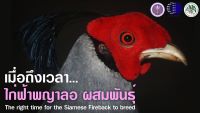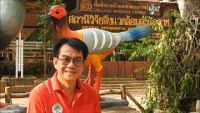Keywords :
Lichenized Fungi; Phylogeny; Taxonomy; Tropical Species
บทคัดย่อ :
The study on the use of lichen as indicator for air pollution monitoring in Nakhon Ratchasima province was divided into two parts. The first part included
collection of lichen samples and measurement of air quality from 276 mango trees in 46 sampling plots in Nakhon Ratchasima municipality areas during January-October 2009. The study on lichen species, frequency, distribution lichen and air quality map using lichens as indicators and to measure nitrogen dioxide and sulphur dioxide in Nakhon Ratchasima municipality areas. The second part was the study on lichen diversity in deciduous dipterocarp forest (DDF) and dry evergreen forest (DEF) in the Sakaerat Environmental Research station (SERS) areas during June-November 2009.
The survey of lichen diversity on mango trees (Mangifera indica L.) in a studied area of 1x1 km2 by using frequency frame of 20x50 cm2. The lichen species and frequency of each species were recorded. Air samples were collected in a tube by applying the passive sampling technique in the rainy and winter seasons in order to analyze amounts of nitrogen dioxide and sulfur dioxide. The ion chromatography was applied in measurement of the amounts of these two gases. A total of 10 lichen families, 17 genera, and 29 species were found in the Nakhon Ratchasima municipality. The five most widespread species were Hyperphyscia adglutinata, Pyxine cocoes, Physcia dimidiata, Lecanora leprosa and Opegrapha stirtonii. The amounts of nitrogen dioxide (NO2) of each sampling plot in measuring period were 0.57-4.92 ppbv in the rainy season and 0.46-8.93 ppbv in winter season. The amounts of sulphur dioxide (SO2) of each sampling plot in measuring period were 0.76-3.57 ppbv in the rainy season and 1.23-3.74 ppbv in winter season. According to the analysis of correlation between Air Quality Index (AQI) with amounts of NO2 in rainy and winter seasons and SO2 in rainy season, negative significant correlation was found at 99% significant level, while there was no significant correlation between SO2 in winter season with AQI. It was indicated that when the amount of these two gases increased, AQI decreased. However, the concentration measurement presented that there was higher NO2 than SO2 in both the rainy and winter seasons. The study on lichen diversity in DDF and DEF at SERS area was conducted in a study area of
20x20 m2 which was divided into six sampling plots by using frequency frames of 20x50 cm2. Lichen species and frequency of each species and environmental factors were recorded, 13 lichen families, 19 genera, and 39 species were found. Total lichen frequency of each species in DDF and DEF was investigated. Study results presented that the Crocynia pyxinoid showed the highest frequency of 41 followed by Laurera benguelensis, Graphis sp.1, Clathroporina sp., Pyrenula wilmsiana, Trypethelium tropicum and Trypethelium eluterae, etc. respectively. The lowest frequency was Parmotrema tinctorum. During the study period, the average temperature, relative humidity and light intensity were at 27.5-32.7oC, 66-83%, and 262-1,002 lux, respectively. The analysis of correlation between lichen diversity index and physical factors in the Sakaerat Environmental Research station was calculated. It was found that they did not significantly correlate at 95% significant level.
เอกสารอ้างอิง :
Pitakpong, A. (2009). The use of lichen as an indicatior for environmental monitoring in Nakhon Ratchasima municipality and Sakaerat environmental research station. Thesis. Master. Suranaree University of Technology



